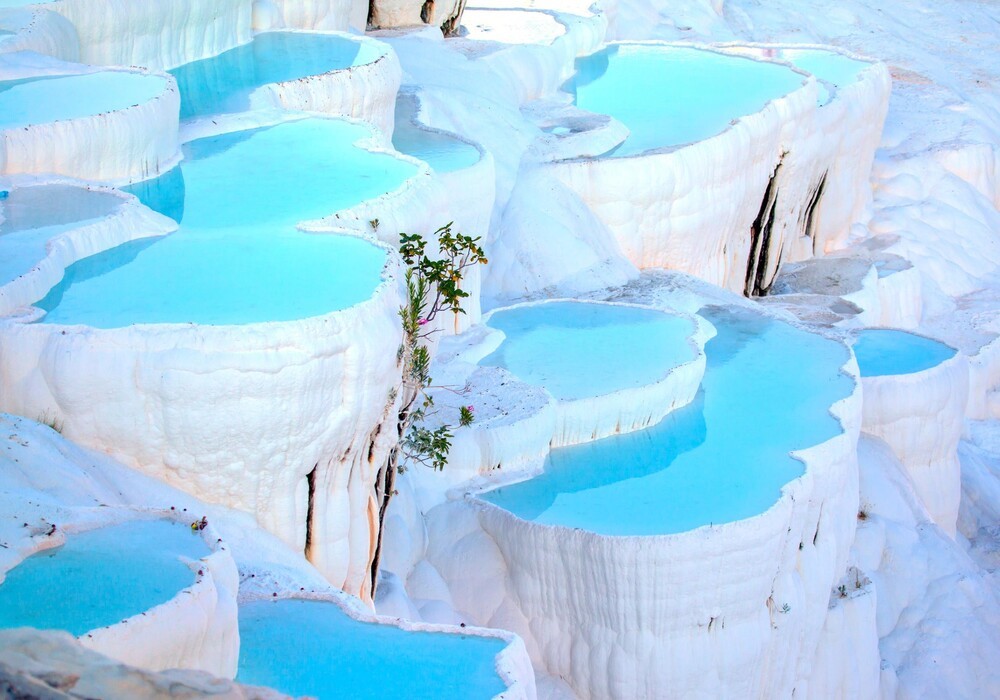Pamukkale, which means "Cotton Castle" in Turkish, is a natural wonder located in the western part of Turkey. It is a UNESCO World Heritage Site and a popular tourist destination, known for its unique white travertine terraces and hot springs that have attracted visitors for thousands of years.
The travertine terraces of Pamukkale were formed over thousands of years by the accumulation of calcium carbonate deposits from the hot springs. The terraces resemble a frozen waterfall or a cotton castle, hence the name. The white terraces and blue-green water create a stunning contrast against the surrounding green hills.
Visitors to Pamukkale can walk on the terraces, take a dip in the hot springs, and visit the ancient city of Hierapolis, which was founded in the 2nd century BC. Hierapolis was a thriving city during the Roman Empire and has many well-preserved ruins, including a large theater, a colonnaded street, and a necropolis.
In addition to its natural beauty and ancient history, Pamukkale is also known for its therapeutic hot springs. The water is rich in minerals and is believed to have healing properties for a variety of ailments, including skin conditions and arthritis.
Visitors can also explore the nearby town of Denizli, which is known for its textile industry and traditional Turkish handicrafts. The town has several museums, including the Denizli Ethnographic Museum, which showcases the region's rich cultural heritage.
Pamukkale is a must-see destination for anyone visiting Turkey. Its unique natural beauty, rich history, and therapeutic hot springs make it a truly unforgettable experience. Whether you're looking to relax and rejuvenate or explore ancient ruins, Pamukkale has something for everyone.







